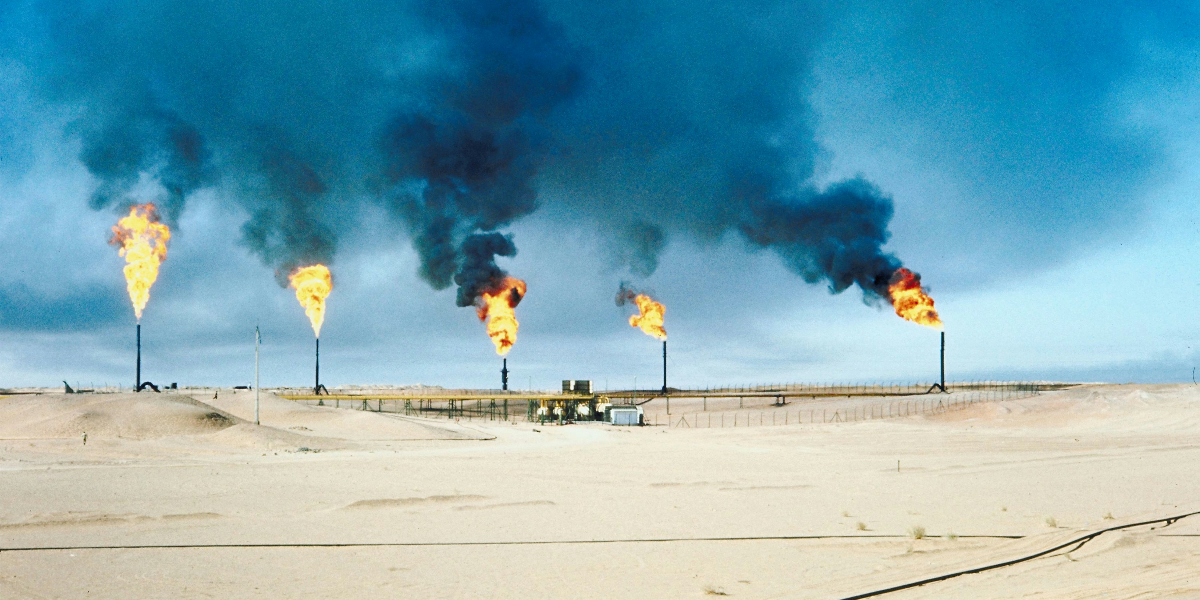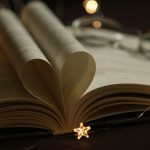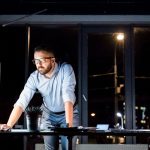Christopher Marquis is the Sinyi Professor at the University of Cambridge Judge School of Business. Prior to Cambridge, he spent seventeen years at Cornell, Harvard Business School, and the Harvard Kennedy School. He writes a regular column for Forbes, and his work has appeared in the Boston Globe, Washington Post, Fortune, TIME, Foreign Policy, The Hill, and Harvard Business Review, as well as many academic journals ranging from the Academy of Management Journal, American Sociological Review, to Stanford Social Innovation Review.
Below, Christopher shares five key insights from his new book, The Profiteers: How Business Privatizes Profits and Socializes Costs. Listen to the audio version—read by Christopher himself—in the Next Big Idea App.

1. How externalities underwrite corporate profits.
An externality is a cost or benefit caused by one party but incurred by another. In some cases, externalities can be positive—for example, a new road opening commerce to an area. But more often, they are negative. Someone has to pay for the costs of negative externalities. Typically, it is the broader society, while benefits accrue to the already privileged. The more devastating the environmental and societal consequences, the larger the reward for companies if they can evade paying for them.
Plastics impose a very visible externality. The scale of plastic entering oceans will triple by 2040. Meanwhile, broken-down microplastics are absorbed by all living things, including us, impacting ecosystems and our well-being. Large companies have little incentive to create new packaging. It would be costly for them, so instead, they promote recycling, shifting the responsibility to consumers. Recycling is not really a solution since only under 10 percent of plastics is recycled. The costs for plastic pollution are borne by us all, and as a result, the companies that create the problem in the first place have higher profits.
Carbon emissions are an increasingly visible externality. By one calculation, $10 worth of coal-fired electricity causes at least $8 worth of harm to human health and a minimum of $8 of environmental damage, so its real cost is more like $26. But it is society that pays the extra $16, not the polluting companies. How do we solve these issues? For emissions, there is an increasing focus on pricing carbon so that companies will have to pay for the damage they create.
But other, more complex, and less visible externalities such as inequality—whereby the poor disproportionately bear societies’ costs, while the rich get richer—are harder to identify, and simple pricing strategies are not enough. We need to demand stronger corporate accountability and governance structures to identify and capture externalities and associated costs. We also need to use policy, investment, and consumer action to make the profiteers that exploit externalities pay for the damage they create.
2. The “win-win” or “doing well by doing good” narrative is flawed.
In recent years, the corporate world has been enamored with the concept of “doing well by doing good.” This idea posits that companies can simultaneously maximize profits and contribute positively to society—a “win-win” scenario where profitability flows from responsibility.
When the Business Roundtable, or BRT, an association of over two hundred elite American CEOs, declared a new stakeholder-focused vision for corporations in 2019, many—including me—were optimistic this would translate into benefits for employees, communities, and the natural environment. However, a few years later, studies paint a less rosy picture. It turns out that despite all the talk about stakeholders, BRT companies have higher carbon emissions and more environmental violations, and they have been found to focus more on shareholder returns than on genuinely aiding stakeholders. These findings definitely raise some eyebrows and make people wonder if this is simply greenwashing at its finest.
“Win-win may sound appealing, but it is often based on selectively chosen examples.”
Let’s take the case of BRT signatory PepsiCo. They have publicly committed to environmental and social responsibility programs under initiatives like “Pepsico Positive” highlighting sustainable practices in agriculture, labor fairness in supply chains, and offering healthier food choices. But selective good works are not enough. Pepsi’s business model remains rooted in selling sugary drinks loaded with obesity-linked chemical sweeteners, alongside snacks designed to keep you coming back for more. Their business is fueling a global healthcare crisis. Shipping liquids halfway across the planet in single-use plastic bottles also releases massive greenhouse-gas, consumes extensive water, and adds to our plastic waste crisis.
These types of “stakeholder capitalism” initiatives mainly act to obscure the damage of the core business models of companies like Pepsi. Win-win may sound appealing, but it is often based on selectively chosen examples and primarily serves to make executives and customers feel good about their choices.
Next time you see a company boasting about its eco-friendly practices, remember that there’s likely more to the story than meets the eye. While corporate initiatives towards sustainability are commendable, we first must ask tough questions about their actual impact on society and the environment. We must also assess companies’ business models and externalities on the whole, not selectively.
3. The “win-win” fallacy is part of the bigger issue of corporate gaslighting.
The failure of “win-win” strategies to solve our problems is part of a bigger issue where companies have developed many ways to convince individuals and governments that fixing the world will bring them profits, so they will do so voluntarily—there is no need for oversight or regulation.
For example, individuals’ “carbon footprints” only became commonly known when the oil company BP began advertising its importance. All of a sudden, carbon emissions are the responsibility of citizens, not the corporations that produce fossil fuels. But over 70 percent of emissions in the last 50 years have come from just 100 companies, and BP is number 11 on that list. If they really cared, they would focus on addressing the impacts of their own emissions instead of promoting how they are supposedly “beyond petroleum.” In fact, only a tiny fraction of their business actually involves renewables.
Instead of rethinking supply chains rife with plastic, business leaders implore us to recycle. Rather than take responsibility for systemic discrimination, they tell us they believe in meritocracy. Put simply, we are being gaslit—made to think that damage created by companies is our fault and problem.
“These “solutions” are promoted by companies to divert the public’s attention from the real ones that would cost them money.”
Listening to companies, we think it is up to individuals to avoid the unhealthy foods they purposely produce and fact-check the social media sites they maintain to make certain they aren’t feeding us disinformation. Of course, we should be doing all those things, but these individual actions alone won’t move the needle. These “solutions” are promoted by companies to divert the public’s attention from the real ones that would cost them money.
We need to put the responsibility back on the actors who should be responsible—the companies! As individuals, we can’t change the world by using fewer straws and other such actions (though these things do help!), but we can make change by collectively organizing and demanding accountability from corporations and transparency from the media and government. The first step to rejecting gaslighting is to recognize it.
4. Beyond silver bullets: Problems are systemic, so solutions should be systemic too.
Today’s runaway climate change, inequality, biodiversity loss, and global health crises indicate that economic and societal change are essential. When I talk to social entrepreneurs and change agents, I am always inspired by the passion and commitment that has driven them to develop innovative solutions to these vexing challenges.
However, I am sometimes surprised by a tendency they have to become overly fixated on their own solutions—that if everyone went all in on the solution they advocate, the world would transition to a more sustainable state. This narrow focus sometimes results in innovators dismissing other potentially viable and even complementary solutions.
Those focused on green innovation criticize the effectiveness of carbon markets. Sustainable investors ignore approaches without a direct profit link. Most in the private sector think regulation is unneeded. Perhaps seeing deeply into one area is like having blinders on, making it harder to see the interconnected nature of the broader picture and the need to advance change on many fronts.
To move beyond this challenge, we need a more comprehensive approach that recognizes and accounts for the entire spectrum of corporate impact. Bad corporate actors are, in fact, products of a broken system that encourages and rewards their bad behavior.
“This narrow focus sometimes results in innovators dismissing other potentially viable and even complementary solutions.”
We need a true multisector approach. Regulatory upgrades, like those in the European Union, are raising the bar for transparency, sustainability reporting, and greenwashing prevention, creating a new corporate accountability paradigm. Riding this momentum, we need new business models that move from a linear conception of production to a circular one that creates positive externalities.
We must redefine how we evaluate and hold companies accountable. We need to examine their overall impact, not just selective achievements. Only then can we foster a system where addressing negative externalities is the baseline and creating positive externalities becomes the goal.
5. Regenerative business provides a way to heal our societal and environmental systems.
We are all used to hearing about sustainable development. For example, the United Nations’ Sustainable Development Goals (SDGs) aim to address 17 global issues, from eradicating poverty to ensuring access to clean water.
Current approaches to sustainability embrace a philosophy of “do no harm” focused on minimizing the negative impacts. But today’s escalating global crises highlight the need for a more profound shift from sustainability to regeneration. The idea of regeneration has its roots in agricultural practices such as cyclically rejuvenating soil and plant life. When extended to business, regeneration encompasses much more than harm reduction. Regeneration shifts focus to making systems better, giving back more than is taken, replenishing the planet’s natural resources, and leaving communities and society more equitable and resilient.
Regenerative approaches to business advocate for wholesale transformation across domains as broad as agriculture, industry, and community and societal health. For example, starting in the late 1990s, Patagonia’s mission statement included the clause of “cause no unnecessary harm.” But when Patagonia entered the food business in 2012, it saw the power of regenerative agriculture and began embracing regeneration as an ideal. In 2017, the company changed its mission to “We’re in business to save our home planet.” Regenerative ideas have spread to the company’s apparel business and influenced every stage in its value chain, from upstream sourcing to downstream product lifecycle extension.
Regeneration redefines what types of value are prioritized and aims to actively enhance ecosystem health, promote social equity, and generate economic value through innovative approaches. Illycaffe, the global coffee producer, is taking a three-stage regenerative approach: first to improve agronomic practices, second to develop coffee varieties more resilient to the effects of climate change, and third to migrate coffee plantations to higher latitudes or higher altitudes. Moving forward, efforts such as popularizing a “regenerative organic standard,” led by brands like Dr. Bronner’s and Patagonia, are gaining steam.
Regeneration goes beyond merely reducing harm or achieving sustainability. Regenerative approaches can contribute positively to the environment, society, and economy and create a circular and inclusive growth model. Given today’s climate and other existential crises, such innovations are more essential than ever.
To listen to the audio version read by author Christopher Marquis, download the Next Big Idea App today:
































